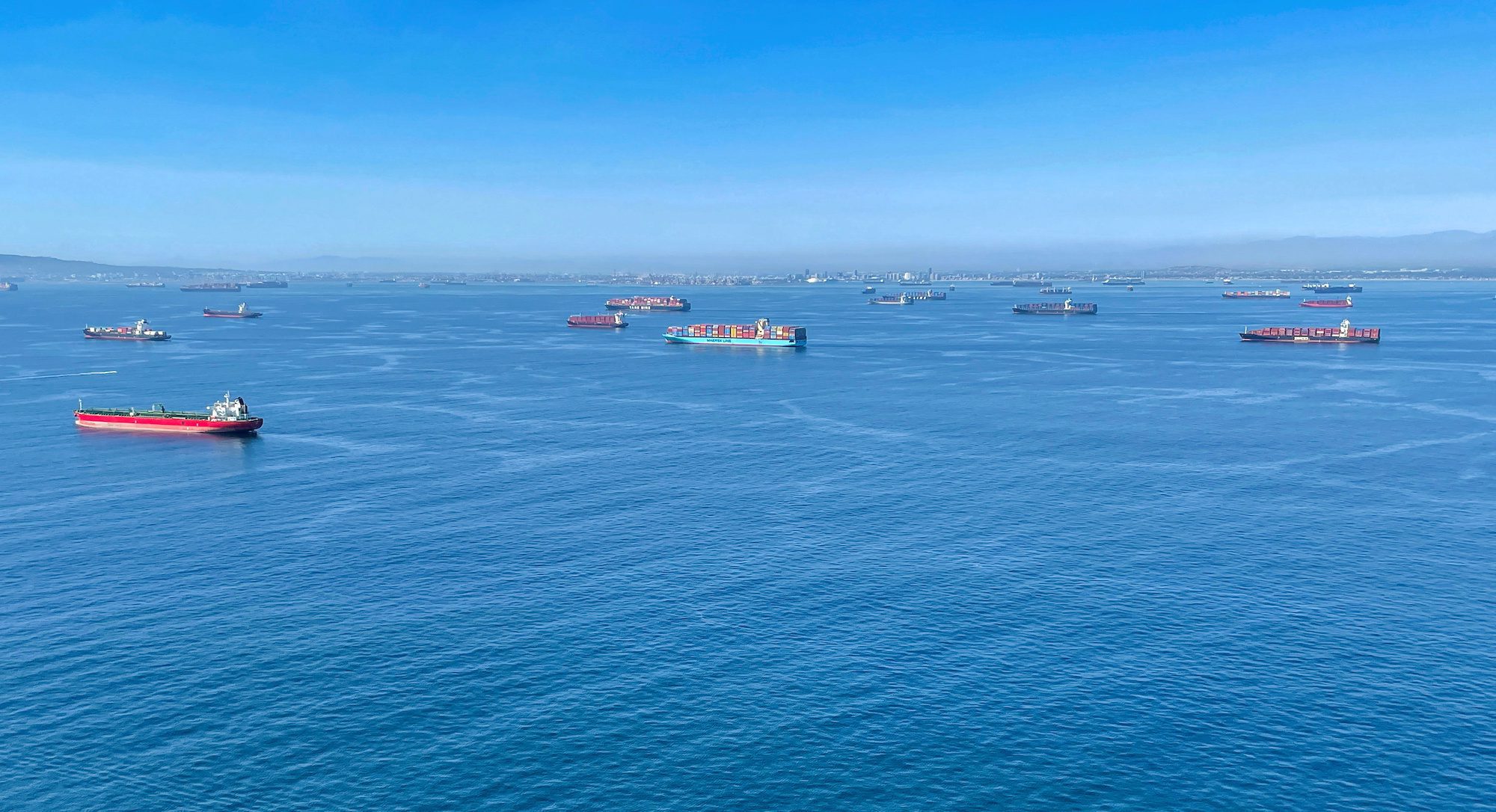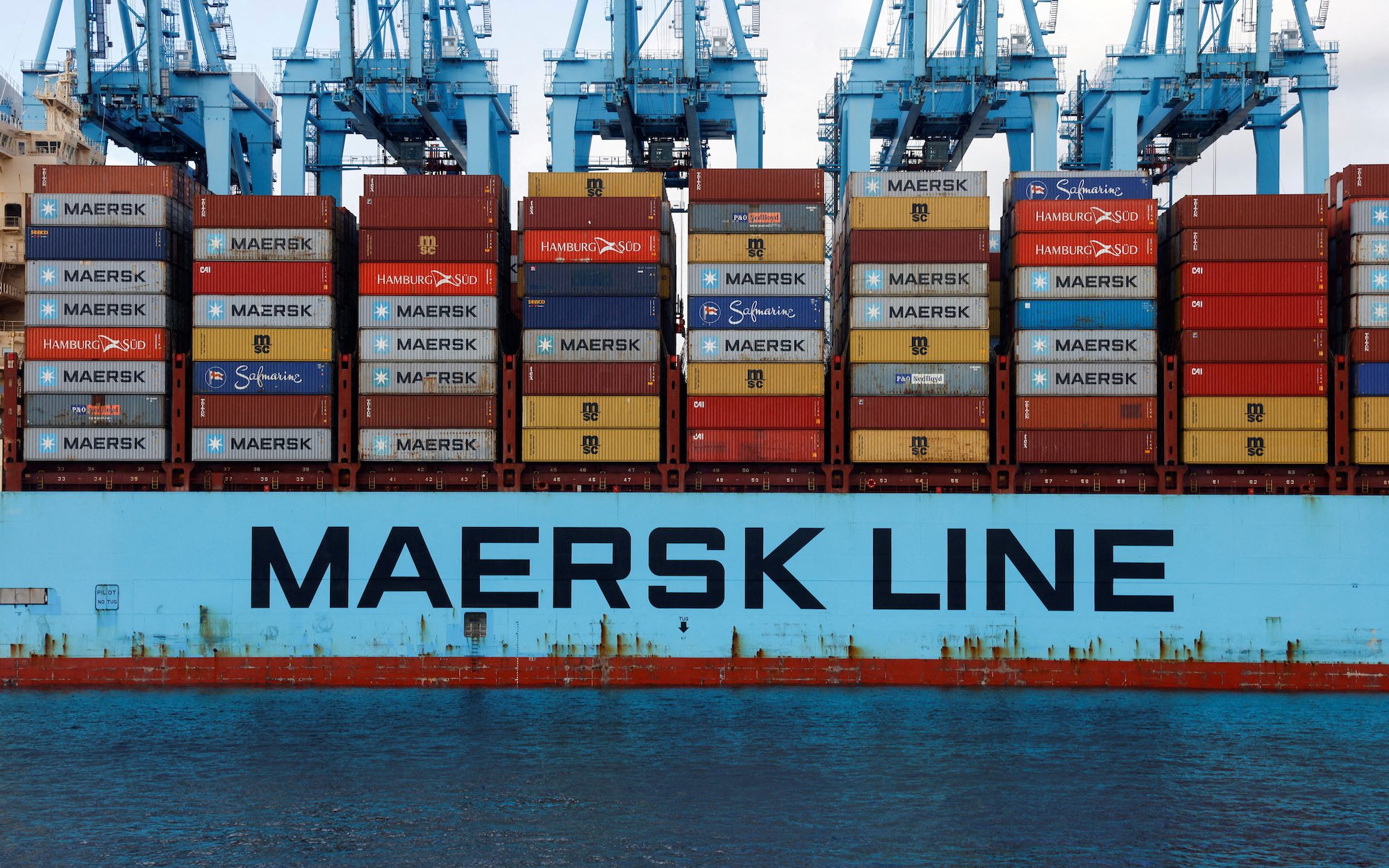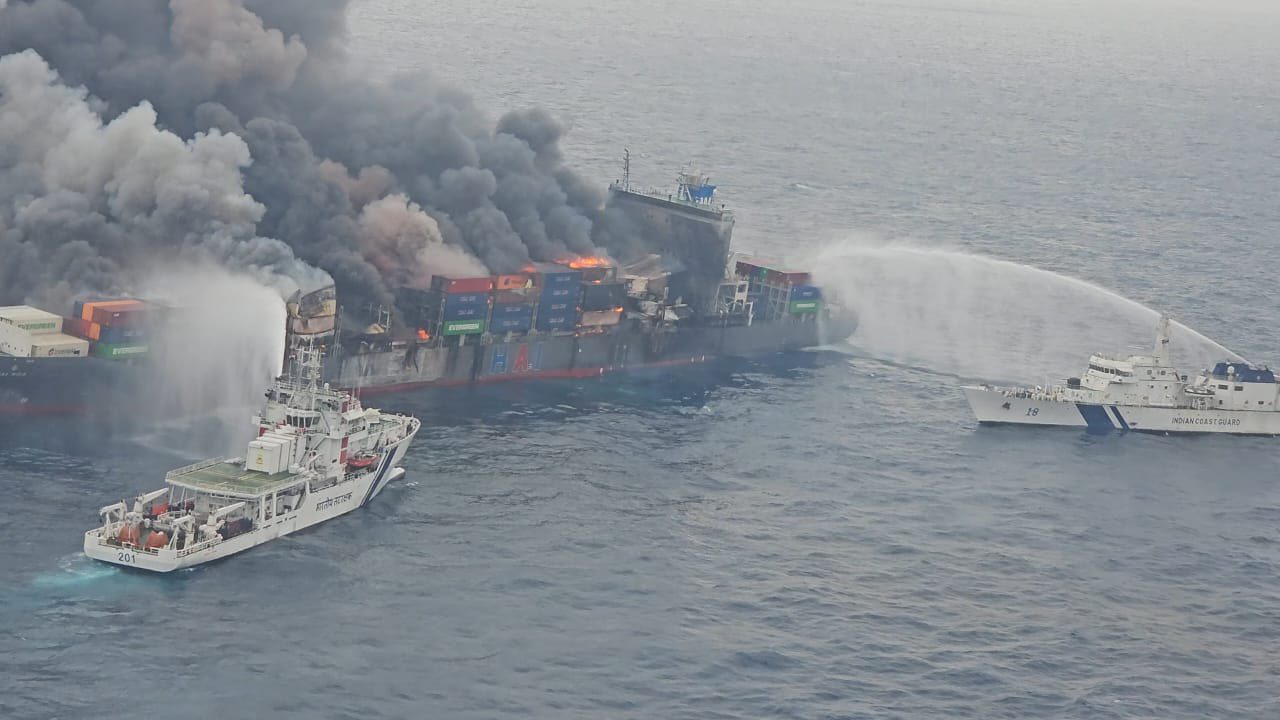By Jessica Resnick-Ault and Nichola Groom
LOS ANGELES, Calif., Oct 5 (Reuters) – Ships in record numbers have jammed the port complex near this weekend’s oil spill in California, according to port data, as investigators look into whether a ship’s anchor could have hit a pipeline to cause the leak.
More than 3,000 barrels of oil leaked into the Pacific Ocean off the coast of southern California over the weekend, killing wildlife, damaging sensitive environmental areas and closing beaches. Officials are investigating whether an anchor could have hit the pipeline, owned by Amplify Energy Corp of Houston.
An anchor strike is a plausible explanation, said two former Amplify employees who asked not to be named. They noted that anchor strikes have dented or scratchedoffshore pipelines before.
There were certainly more anchors in the area due to supply chain bottlenecks as consumer demand has rebounded from the depths of the pandemic. As of Tuesday morning, there were 63 container ships in San Pedro Bay waiting to unload at the ports of Los Angeles and Long Beach, according to the Marine Exchange of Southern California. On Sept. 19, a COVID-era record 97 ships were backed up.
Prior to the pandemic, there was typically no more than one container ship at anchor in the bay, according to Captain Kip Louttit of the Marine Exchange, who added that anchorages around the port have been full for the last year.
“All ships were anchored where they were supposed to be,” Louttit said of the vessel backup.
The spill closed numerous beaches and has killed wildlife in Orange County, south of Los Angeles. On Monday, Orange County District Attorney Todd Spitzer said a separate investigation is being conducted to determine the cause, and that Amplify could face civil and criminal liability.
Environmental watchdog group SkyTruth said satellite imagery from Oct. 1, the day before the spill was reported, shows cargo ships anchored near the area where the pipeline runs, according to government maps. The closest, however, was about 450 meters away from the pipeline, SkyTruth President John Amos said.
“That seems like a comfortably long distance to separate that pipeline from that ship, but one thing I don’t know is how accurate is this government data on exactly where this pipeline sits on the seafloor,” Amos said in an interview.
The pipeline runs along the ocean floor from the Elly platform, located in 255 feet of water, then heads toward port. Some sections are buried and some are above the sand.
The company and contractors patrol the pipeline by boat about once a week, with workers looking for clues of a possible spill, leak or anomaly. Chemical analysts test the product coming out of the pipeline for iron, which could indicate corrosion or metal loss in the line.
Metal devices called “smart pigs” are run through the pipeline about every three years to check for anomalies. The last such test was conducted in 2019, Amplify Energy CEO Martyn Willsher said at a news conference Monday.
Huntington Beach, about 40 miles (65 km) south of Los Angeles, had 13 square miles (34 square km) of ocean and portions of its coastline “covered in oil,” said Mayor Kim Carr. The town, which advertises itself as Surf City USA, is one of the rare places in Southern California where oil platforms are visible from the beach.
Angry residents blasted what they called a slow initial response to the spill. Already, one lawsuit has been filed against Amplify by a local DJ, Peter Moses Gutierrez Jr.
Some 23 oil and gas production facilities operate in federal waters off the California coast, according to the U.S. Bureau of Ocean Energy Management. Amplify’s BetaOffshore unit has three, including the Elly offshore platform, where the pipeline was connected. (Reporting by Nichola Groom, Jessica Resnick Ault, Lisa Baertlein and Daniel Trotta; Editing by David Gregorio)
(c) Copyright Thomson Reuters 2021.
Sign up for our newsletter

 Join The Club
Join The Club












